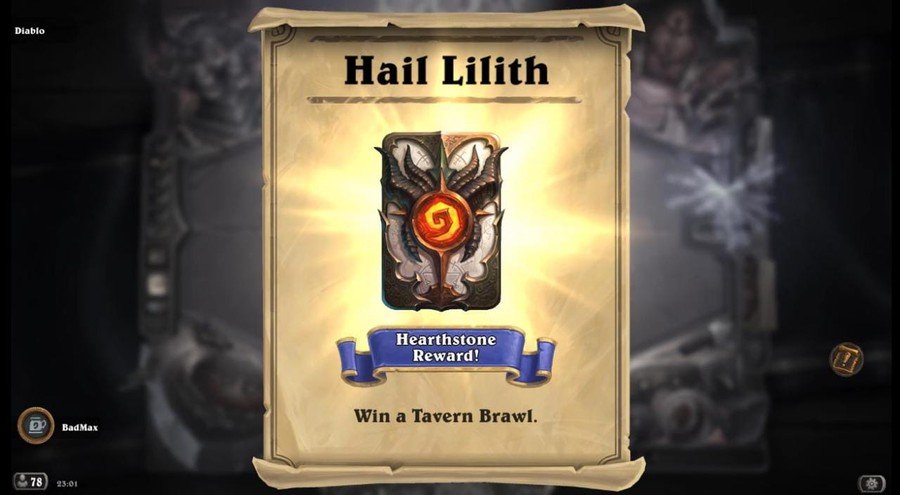Introduction
My name is Yangzera, and I was chosen to teach you all how to pilot the Pure Paladin deck in the best way possible!
With no nerfs scheduled for patch 26.2.2, the class seems to be in a great place to play with a deck made solely of class cards.
About the Deck
Pure Paladin has historically not been a powerful deck given the importance of neutral cards to both the meta and the class, especially recently with Prince Renathal and Mr. Smite.
With the Murder at Castle Nathria and March of the Lich King
expansions, we received wonderful cards that support the archetype and relevant buffs that make The Countess and The Purator critical high-value cards for the archetype, especially after the Legendary Invitation mana cost was reduced to 2.
Ad
The Decklist
The Relevance of Buff in Countess

With the cost reduction of Legendary Invitation from 3 mana to 2 mana, we can finally use all three spells in the turn right after playing The Countess, regardless of whether we played it in round 6 with the coin or 7 naturally.
The difference between playing two and three uncovered Legendary cards in the same turn is huge, and often the difference between winning and losing the game.
Pure Paladin's Strategy
Pure Paladin can be very reminiscent of old Zoo Lock strategies in that it's a deck that fights for the board early and maintains control of it, but has very similar weaknesses as well.
We want some early game units (but not too many) to discount the Lightrays and keep the Tempo high until the round where we play The Countess, which is a slow play that will make us lose some board control.
The follow-up of this round (which is preferably the 7th or even the 6th) is ridiculously strong and will often simply win the match, or put it in a position where the opponent cannot recover, and we end up winning right away after.
The Mulligan

The Pure Paladin mulligan is relatively easy – we look for early game cards that can put us on the board early. It's critical to have 1 drops from turn 1 against board-centric matchups like Unholy DK and Shadow Priest, while matchups like Warrior and Warlock require explosive turns that are done by playing The Countess on the curve, usually the pressure in these matchups comes from an Order in the Court.
I find it interesting to keep important cards like Order in the Court and The Countess in the starting hand because our deck is infinitely better when it manages to play The Countess on the curve. Order in the Court can be played on turn 5 to set up a strong turn 6 with two Lightrays and enable an explosive turn 7.
It's important to identify matchups where a single large unit can wipe out everything for the opponent, with a Sanguine Soldier or Righteous Protector buffed by For Quel'Thalas!, Hand of A'dal and Seal of Blood.
I also think it's important not to necessarily stick with cards that depend on you having the board in your hand without having already found the cards that will put you on the board in the first place. If you see a one drop, it's ok to keep a Hand of A'dal, if not, no.
I also recommend making your mulligan based on whether you're in the play or the coin, as it's easy to get behind on the board second to act. It's ok to take a little more risk when playing with Coin, as it's already a natural disadvantage.
The Weaknesses
Versions of the deck that don't use Blood Matriarch Liadrin can have extreme difficulty getting back on the board once they lose it - we don't use sweeps or rush units on the main deck, which makes the process of rebuilding your board back against decks like Unholy Death Knight, Shadow Priest and Midrange Hunter quite hard to achieve.
Ad
Another inherent weakness of the deck, which can be covered with a change in gameplay style, is that we have almost no direct damage. We can deal more damage directly from the hand, but that comes at the price of having a unit on the field to get the buff, which puts even greater importance on retaining our board to finish off games that need a little more than damage.
Covering Weaknesses

The most common way I've found to cover the inherent weakness of the lack of direct damage is to identify when a specific match is most likely going to be decided on how much damage you can deal at once, and prepare for that.
My recommendation is to build a large Disco Maul and save its effect for a start of the round when one of your lackeys survives. You'll often be able to deal massive amounts of damage with this effect, and often times tucking it away can be useful as one of your Legendary Invitations might discover a Charged minion such as King Krush.
The hardest weakness to deal with is the deck's inability to get back on the board once it loses control over it, but Blood Matriarch Liadrin is a strong alternative that can help in times like this. Along with buff spells like Hand of A'dal and For Quel'thalas!, Liadrin can make the overwhelming majority of units in the deck gain divine shield and rush, not only helping the deck back on the board but also offering extra protection to some cards – if combined with For Quel'thalas!, Liadrin can grant divine shield to zero-cost Lightrays, making for a strong setup turn for The Countess.
Possible Tech Cards
There are several cards that can be added and removed from the list depending on your play style and also your collection. The most notable ones are:
Kotori Lightblade + The Garden's Grace (Only add one if adding the other one as well);
Second copy of Order in the Court;
In my opinion, the easiest card to cut from the deck is Muckborn Servant, but I don't like to cut it, as it can be very useful in value battles, in addition to having the chance to discover a second copy of The Countess.
The Big Winner of Patch 26.2.2
At the time of writing this article, patch 26.2.2 was released in Hearthstone just a few days ago, and the deck has risen to the top of the meta for being one of the few decks that didn't receive any nerfs or tweaks, and it took great advantage of the nerfs in Unholy DK, a matchup that I find particularly unfavorable.
With several of the strongest decks having their power reduced, Pure Paladin can shine in this early meta, and seems to be a great option to catch legend in this final stretch of the month and also a viable option for the early June climb.
Conclusion
Pure Paladin is a great option for those who want to enjoy quick matches and still use a good deck and have powerful turns full of value and fun.
I hope I spoke well about specific points of the deck that go beyond the mulligan and curve so that you can have new approaches to decision-making, and manage to dig wins from unfavorable matchups. If you've made it this far, thank you very much, and until the next article!
Ad










— commentaires0
Soyez le premier à commenter